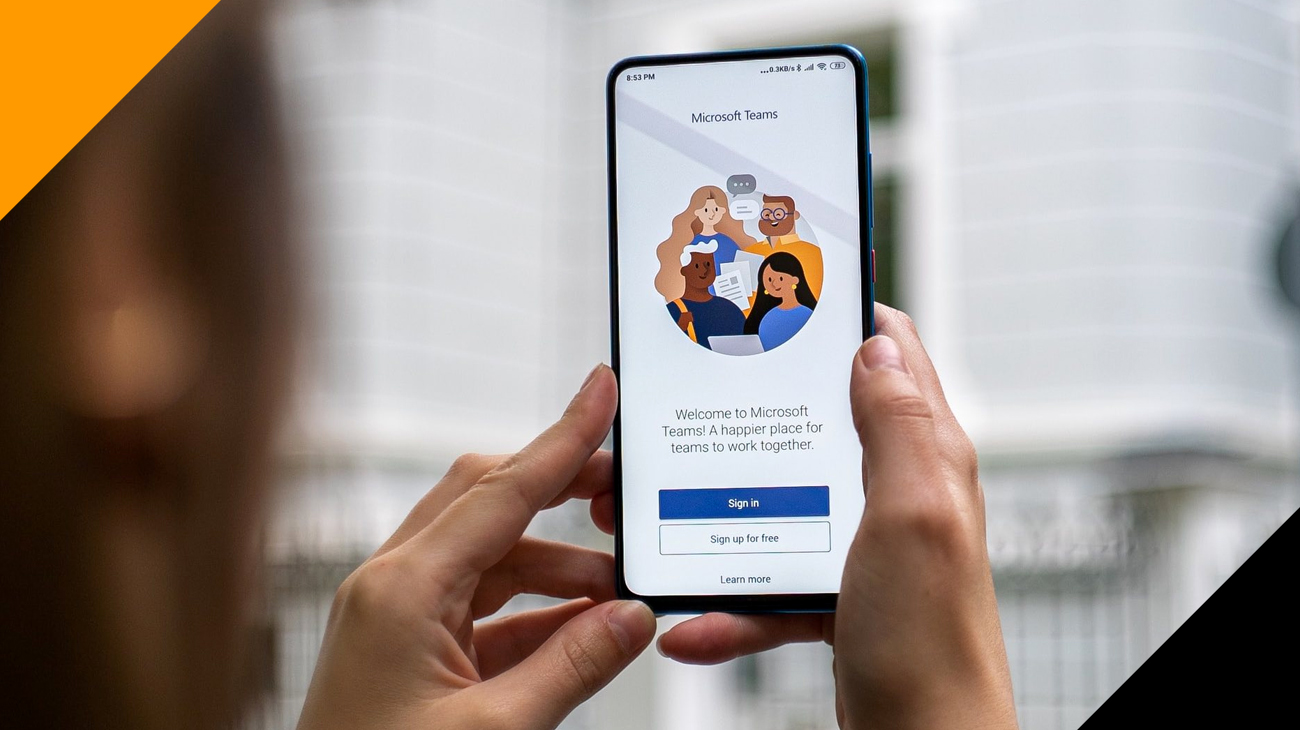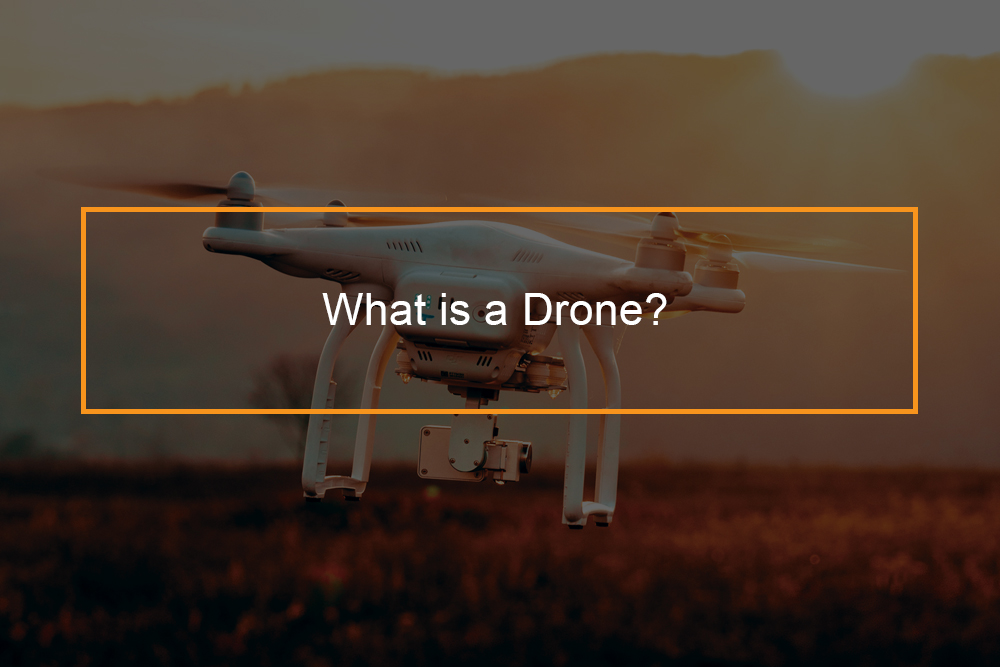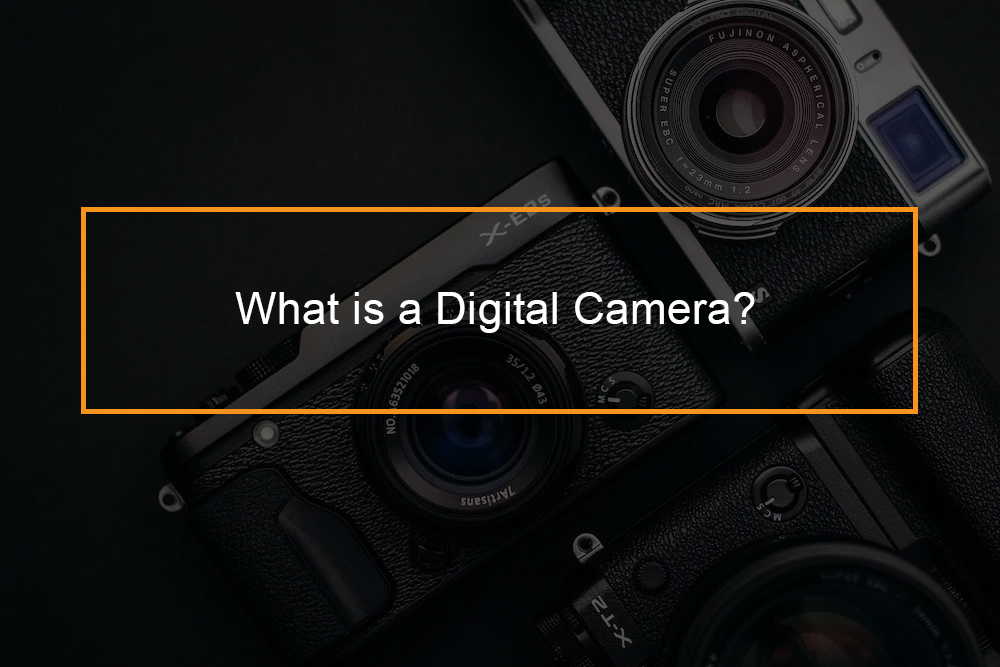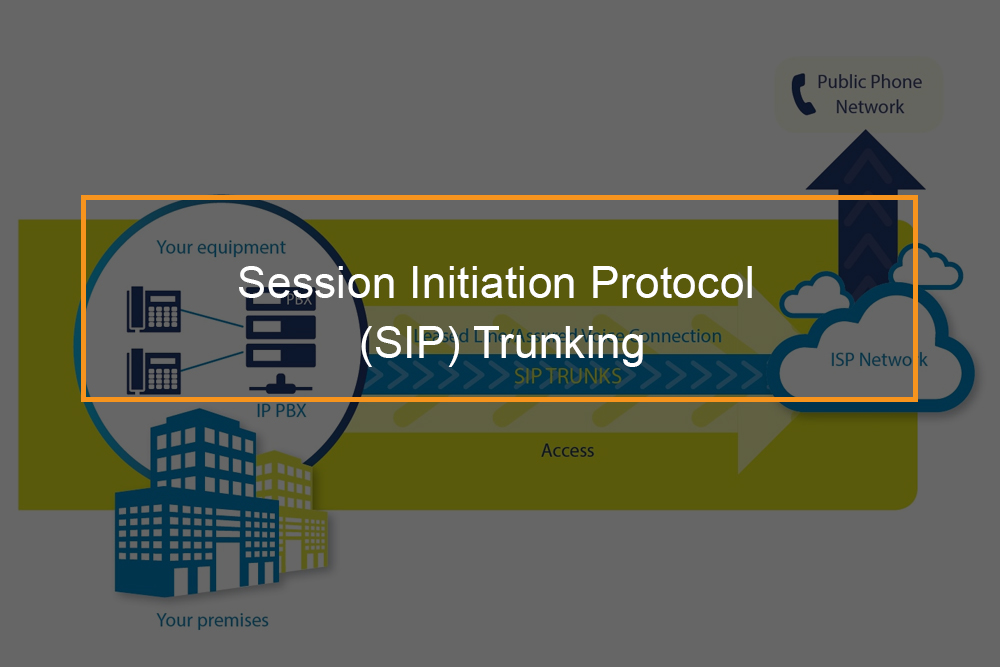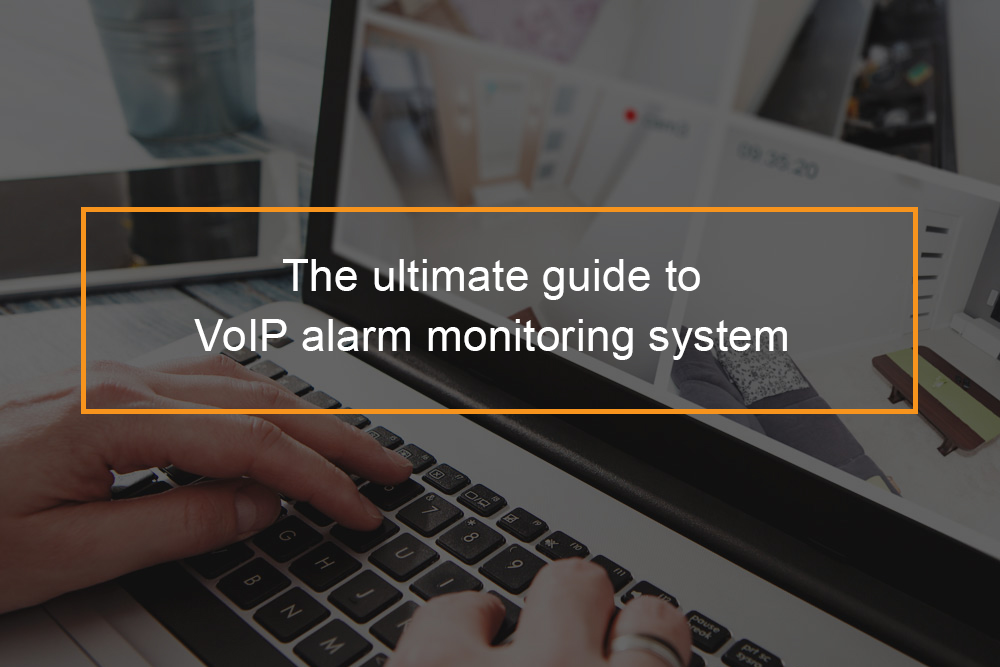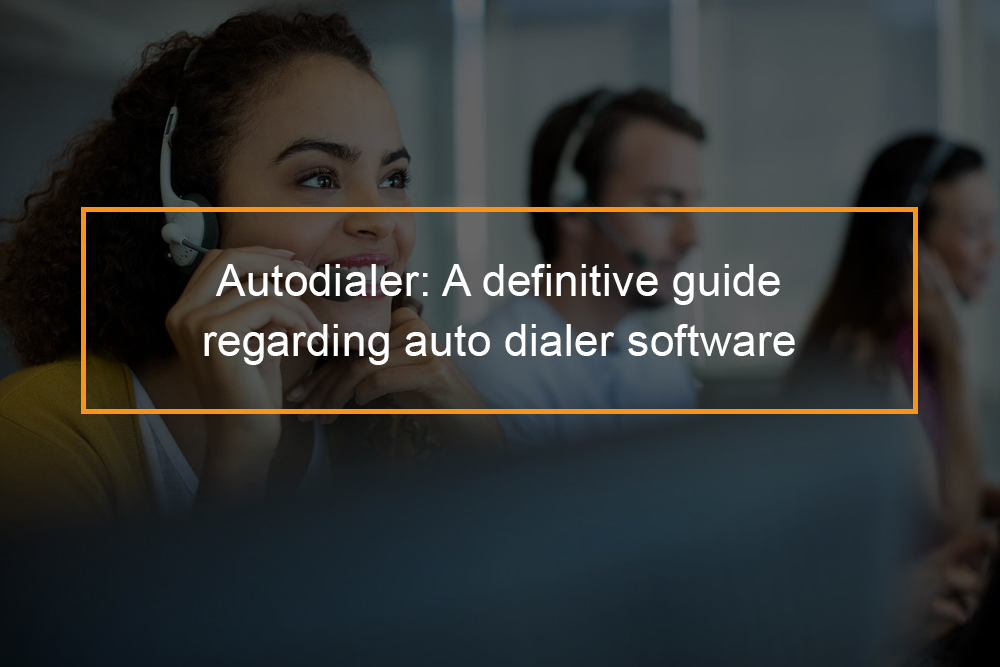
For an auto dialer to work, it requires a computer running the software, voice modem, a person answering the phone, and an active telephone line. Usually, the voice modem enables the computer to play call recordings over a telephone line. Even though using Voice over Internet Protocol (VoIP) often removes the need for any equipment.
When it comes to standard desktop computers, currently, they have two to four internal modem card required; typically, the more modems you have, the more automated calls a call center can place. The distribution software will inform the computer which numbers to dial and what to do when there is a voice mail, a busy signal, or an actual live person who picks up the telephone. Before the telephone can connect, the auto-dialing software must decide what number to call and for how long. In the past, an autodialer software might dial each combination of numbers at a random process known as war dialing.
Today auto-dialers select from a database of leads. A person answers most calls within the first 25 seconds, or the period it takes to ring four times. After that, the call is forwarded to voicemail, so the dialer will drop a call in case no one answers by twenty-five seconds. In case a call encounters a busy signal, it is dropped.
Phone dialers are sometimes built with voice detection software designed to identify whether or not it is a real person and not a voice mailbox. In that situation, auto dialer systems will take the right action by call routing to a prerecorded message or a live operator. In case there are no live operators at the time, it will play pre recorded voicemails and can also put the caller on hold. The application compiles statistics based on how long each call lasts if the phone is answered by a person or even voicemail box and other information. From that information, the auto-dialer uses predictive dialing to place calls before the agent also hangs up the telephone. Ideally, for the call center, immediately the sales agent finishes with one caller, the agent will connect with another caller.
What is an autodialer?
Inbound and outbound call dialer definition
Automatic dialers or auto-dialers are a type of computer telephony integration. Deploying special software and a modem, a computer can be programmed to place thousands of calls automatically. Based on the software’s complexity, the computer can detect if a live person answers the telephone and then hands over the call to a human operator.
The PC can also be programmed to play a recorded message, leave a message on an answering machine, or offer a menu of options to the person who answers. Autodialers are not bad. Even though some sales teams use auto-dialers to support annoying telemarketing campaigns, they have many uses, as well. For example, a school could use an autodialer to send emergency notification to students and parents regarding a fire. And a doctor’s office could configure a system for appointment reminders to senior citizens when to take their medication.
How do automatic dialers work?
In case the auto-dialing system is going to be utilized in a call center solution with multiple live operators. Every operator will require his telephone with a headset connected to the dedicated phone line. Autodialers can work over Voice over IP (VoIP), PBXs systems that use SIP trunking, or the regular public switched telephone network (PSTN).
The essential part of the auto-dialing system is the software. The software tells the PC which numbers to dial and also how to respond to different cases (in case an answering machine picks up, human answers, a busy signal, and others). Voice detection is the technology that enables auto-dialing software to detect the difference between an answering machine detection and a human voice. Here is how it works:
- In case nobody picks up the phone for four rings or more, about twenty-five seconds, then there is an increased possibility that a machine will answer the call.
- When the call is answered, telemarketing software evaluates the length of the first words spoken and waits for a pause. In case the initial response is a short burst of words (1-3 seconds) followed by a break, then it is human.
- The application then plays a pre-recorded message or passes the call to a live operator.
- The telltale pause that comes with most telemarketing calls results from the time it takes for the software to identify a human voice and route the call to an available operator.
What is a predictive dialer and how does it work?
One of the main developments in auto-dialers software is predictive dialing. Predictive dialing is most useful in a call center setting, where many operators are making simultaneous calls. An auto-dial system reduces the responsibilities of a call center manager. Predictive dialers technology uses a complicated algorithm to anticipate when an operator will be free to manage another call.
Predictive dialers analyze several factors. It uses the information to calculate precisely how frequent to begin a new number to amplify the time the live operators are on the telephone and talking. The system will frequent dial numbers when no operators are accessible, knowing that an operator can end a call right when another one starts. IVR, interactive voice response is an auto dialing software that supplies interactive menus on outgoing calls. For instance, a marketing or demographics company can auto-dial customers and present them with an interactive poll they can answer with voice responses or their telephone keypad.
What are the different types of auto-dialers?
Types of auto-dialing
Auto dialers come in different forms and perform various functions. Auto dialers come in handy when time is of the essence in automate dialing, or it is merely inefficient to allocate an individual. Voice dialers have features that amplify the chances that a caller will reach a person instead of the voice mail, even automatically dialing numbers when it predicts an agent will be accessible based on call analytics. Even though much-maligned, an autodialer is a useful tool for sales, the hospital, and emergency notification solutions.
Preview dialer
With a preview dialer, call information is delivered before connecting, at which the agent decides if or not to field the call.
Progressive dialers
Simultaneous allocating of the number to the agent before dialing- think of predictive progressive and preview dialers as getting all the information of a call and having only a few seconds to react.
Voice broadcasting
With this dialer, it enables phone messaging by creating a new message in advance and delivered to individuals or voicemails based on destinations, which are also pre-set. In case you are unable to connect, the phone systems will typically try to make another call at a later time by negotiating an alternate schedule.
Predictive dialer
This is the definitive saver, involving a system that decides whether to connect the call based on successfully reaching a person. Busy signals, voicemail, and more roadblocks to phone calling will lead to the call being terminated. Predictive dialing deploys a dialing engine based on an algorithm that kicks off automatic outbound calls for particular calling campaigns in the background of the call.
Smart predictive dialer
This dialer places calls, plays prompt, and audio messages and passes the calls to call center agents only when the called person requests a contact.
Power dialer
Also referred to as a rapid dialer, power dialing contacts number instantly after a call is completed. From a contact list, the power dialer ensures that you do not waste time looking for numbers to contact as you are placing a call. When a number is unattended, disconnected, or busy, the power dialer instantly moves to the next contact.
What is the upside and downside of auto-dialers for call center software?
Even though auto-dialers are beneficial and even proactive equipment for completing the circuits of communication, they can also be used for voice broadcasting or robocalling, particularly in a way that is intended for solicitation.
The main benefit of auto-dialers is the fact that they are cheap and free to run by using Voice over IP. Without the need for physical wires, auto-dialers using Voice over IP can be scaled up almost infinitely, increasing phone dialing rate simultaneously with little or no maintenance or intervention of call center employees. Automated dialers are particularly useful in some environments, increasing talk time and profits. Typically call centers to integrate automated outbound calls with CRM and reach of customers by increasing agent talk time.
Auto-dialers business phone features
- CRM integrations
- Call monitoring and workflow automation tools
- Speech analytics
- Inbound calls management features such as automatic call distribution
- Workforce management software which provides workforce and appointment scheduling features
- Caller ids
- Call routing
- Call transfer
- Click to call
- Touch tones opt-out options
However, some small or mid-sized nonprofits still go about calling traditional ways: manual dialing numbers on their telephones and using spreadsheets or real paper to record phone calls. This is a waste of time during outbound sales prospecting. Cue phone banks through automated phone calls, which optimizes the entire journey of using a cloud call center to connect with customers and donors.
If you look at it negatively, this means a lot of sales calls made without accountability or regulation. Top dialer CRM software in the market includes Adversus dialer, ChaseData cloud call center software, Kookoo Cloudagent, PhoneBurner outbound call centers solution, Zapier integrations, and omnichannel contact center solution. Some of these services come with a free trial (no credit card required).


